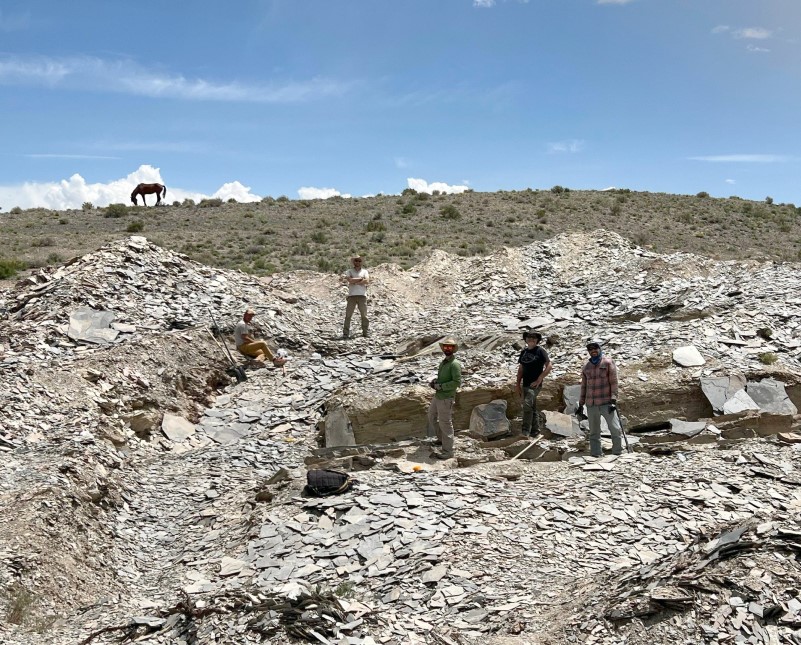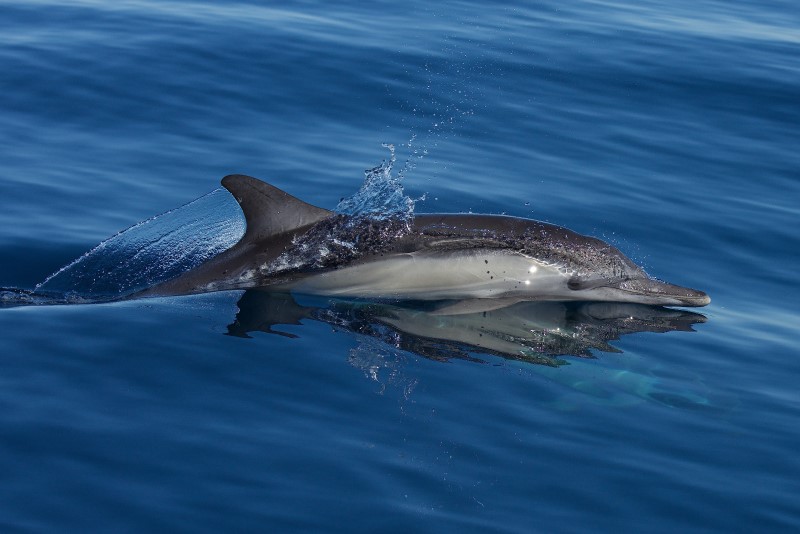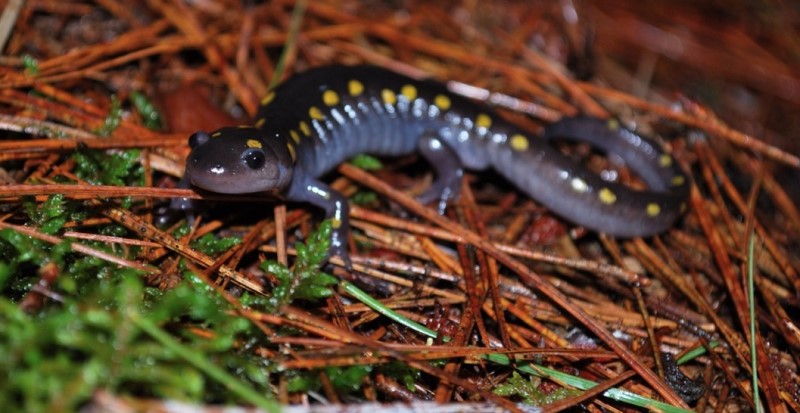Dr. Rudy Lerosey-Aubril and Dr. Javier Ortega-Hernández share insights from their recent studies on Cambrian vertebrates and sponges, published in Royal Society Open Science. These two papers underscore the Marjum Formation’s critical role in documenting the early evolution of complex, animal-rich marine ecosystems.

Utah’s West Desert may not appear as striking as the geological wonders of the National Parks in the south of the state, but beneath its surface lies a hidden treasure. This treasure isn’t gold or oil, but rather a remarkable palaeontological archive that offers unparalleled insights into the early diversification of animals and their conquest of marine habitats half a billion years ago. Within an area roughly the size of Greater London, no fewer than four Cambrian conservation deposits—rare sedimentary strata that preserve fossils of both biomineralizing and non-biomineralizing (‘soft-bodied’) organisms—are available for study. Among them, the Marjum formation stands out for the diversity, abundance, and quality of preservation of its fossil biota.
Our two recently published studies highlight the scientific importance of this Cambrian deposit, as they describe some of the earliest representatives of animal groups familiar to us all. One reports the first discovery of a stem-group vertebrate in the Cambrian of Western USA. With its torpedo-shaped body, numerous muscle blocks, large branchial cavity, and bulging eyes, Nuucichthys rhynchocephalus looks somewhat intermediate between lancelets (vertebrate relatives) and fish larvae (true vertebrates). These characteristics explain its placement on the evolutionary stem leading to goldfish, frogs, slider turtles, poodles, and humans, alongside a few other elusive Cambrian species from Canada, China, and Eastern USA.
These early vertebrates were technically invertebrate vertebrates, as they lacked vertebrae. At best, they had tiny, possibly cartilaginous structures in their heads, which have been interpreted as precursors of branchial arches. The new species from Utah and its North American relatives were finless and, therefore, poor swimmers. However, they probably lived in the plankton-rich upper layers of the water column, filtering suspended food particles and small organisms using their branchial cavity. This distance to the seafloor, along with the delicate constitution of their bodies, may explain why their remains are only found in a few Cambrian fossil sites known for their exquisite preservation, a select group to which the Marjum Formation now belongs.
Our second study describes Polygoniella turrelli, a small yet surprisingly complex sponge from the Marjum Formation. This species had an unusually thick wall containing a network of cavities and two layers of hexactine spicules. Strongly reminiscent of modern representatives of the class Hexactinellida, the complexity of this anatomy is unparalleled in Cambrian seas and is only matched in the early fossil record of sponges by a species 70 million years younger. Our discovery demonstrates that major aspects of the body plan of glass sponges – an hexactin-based skeleton and a complex aquiferous system – had already evolved 500 million years ago.

Select sponges from the mid-Cambrian Marjum Biota.
Polygoniella turrelli is one of 60 new animal species (2100 fossil specimens) discovered at the recently excavated Gray Marjum fossil site. Comprising around 150 species, including animals such as comb jellies, tunicates, or vertebrates that are rarely preserved in Cambrian rocks, the Marjum Biota offers a fresh look at how the diversification of animal life profoundly transformed the functioning of marine ecosystems on our planet.
Meet the authors
Rudy Lerosey-Aubril is a research scientist in the Department of Organismic and Evolutionary Biology and Museum of Comparative Zoology at Harvard University. His research explores the emergence and early evolution of animals during the Cambrian period, as informed by exceptionally preserved fossil biotas. Currently, he coordinates investigations into the Cambrian Konservat-Lagerstätten of the American Great Basin Region, especially Utah.
Lucas Del Mouro is a research and development project manager at the Flextronics Institute of Technology and a researcher at the University of São Paulo, Brazil. He investigates the functioning of paleoecosystems using geochemistry, taxonomy (as a specialist of Paleozoic Porifera), and various imaging techniques.
Joseph Botting is an independent researcher holding positions as an Honorary Research Fellow at Amgueddfa Cymru - National Museum Wales, UK, and as a Guest Scientist at the Nanjing Institute of Geology and Palaeontology, China. His research focuses on Ordovician and Cambrian sites of exceptional fossil preservation, with a special emphasis on the early evolution of sponges. He also explores other poorly understood animal groups, such as worms.
Robert Coleman and Jacob Skabelund are seasoned avocational palaeontologists, with expertise in Carboniferous fossils from Illinois (Mazon Creek) and Cambrian fossils from the American Great Basin Region, respectively.
Robert Gaines is a Professor in the Geology Department at Pomona College, USA. His primary research area is the geologic record of the origin of animals and of complex ecosystems.
James Weaver is a research scientist in the Department of Civil and Environmental Engineering at MIT. Working at the interface between zoology, materials science, biomedical engineering, and multi-material 3D printing, his main research interests focus on investigating structure-function relationships in hierarchically ordered biological composites and the advanced fabrication of their synthetic analogues.
Javier Ortega-Hernandez is an associate professor in the Department of Organismic and Evolutionary Biology and curator of Invertebrate Paleontology in the Museum of Comparative Zoology at Harvard University, USA. His work centres on the origin of animal groups and the modern biosphere during the early Palaeozoic through study of sites with extraordinary fossil preservation, especially those documenting the Cambrian Explosion and the Great Ordovician Biodiversification Event.
Read the full papers here: A long-headed Cambrian soft-bodied vertebrate from the American Great Basin region and A new sponge from the Marjum Formation of Utah documents the Cambrian origin of the hexactinellid body plan
Royal Society Open Science is an open access journal that welcomes the submission of all high-quality science. More information about the submission process can be found on our webpage.
Images: Top: The Gray Marjum excavation site (May 2023). From left to right: J. Skabelund, R. Lerosey-Aubril, J. Ortega-Hernández, R. Gaines, and L. Del Mouro. Second: Select sponges from the mid-Cambrian Marjum Biota. (A) Leptomitella metta. (B, G) New leptomitid sponges. (C) Testiispongia venula. (D) New demosponge-like sponge. (E) Wapkia sp. (F) New species of Valospongia.



.jpg)


